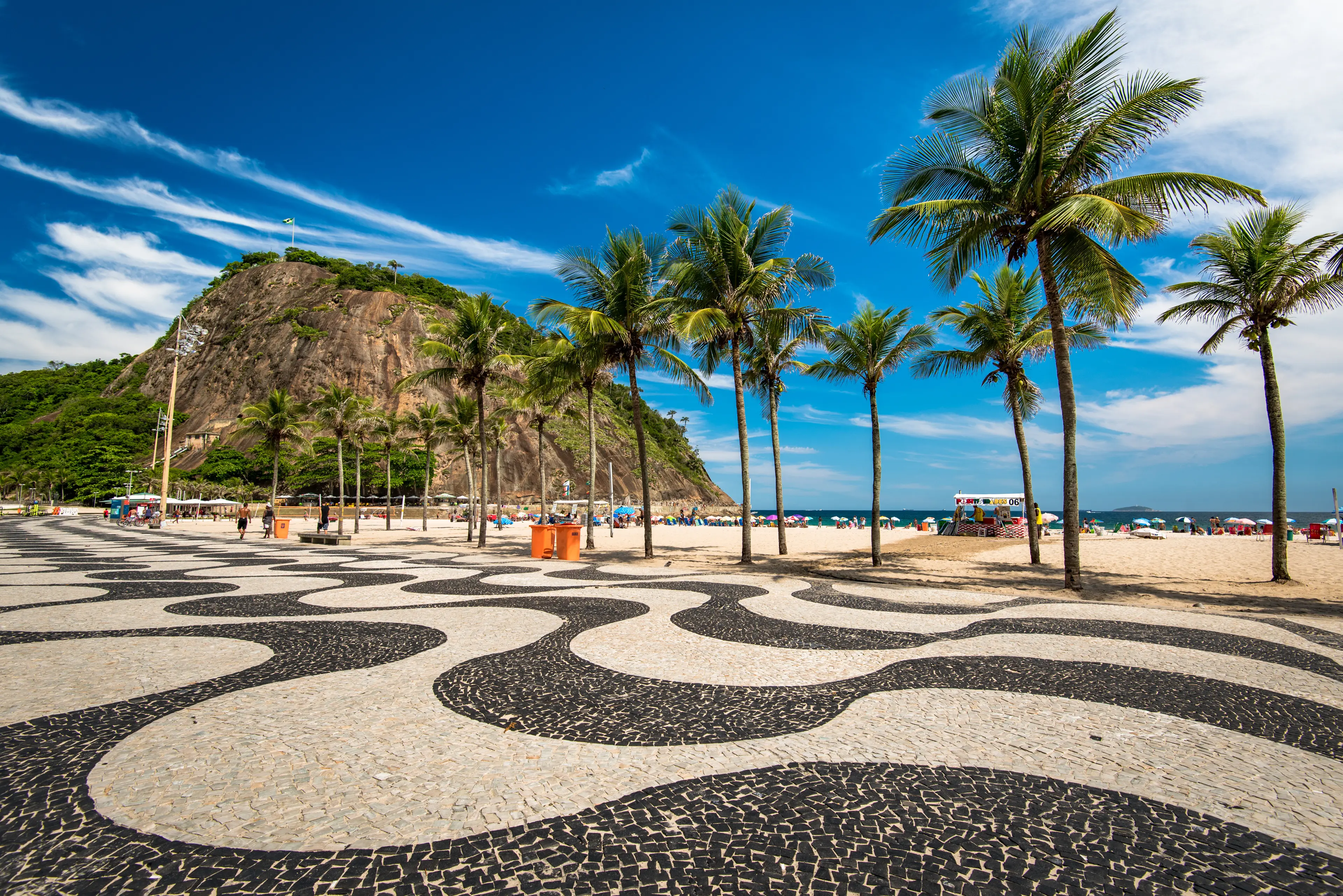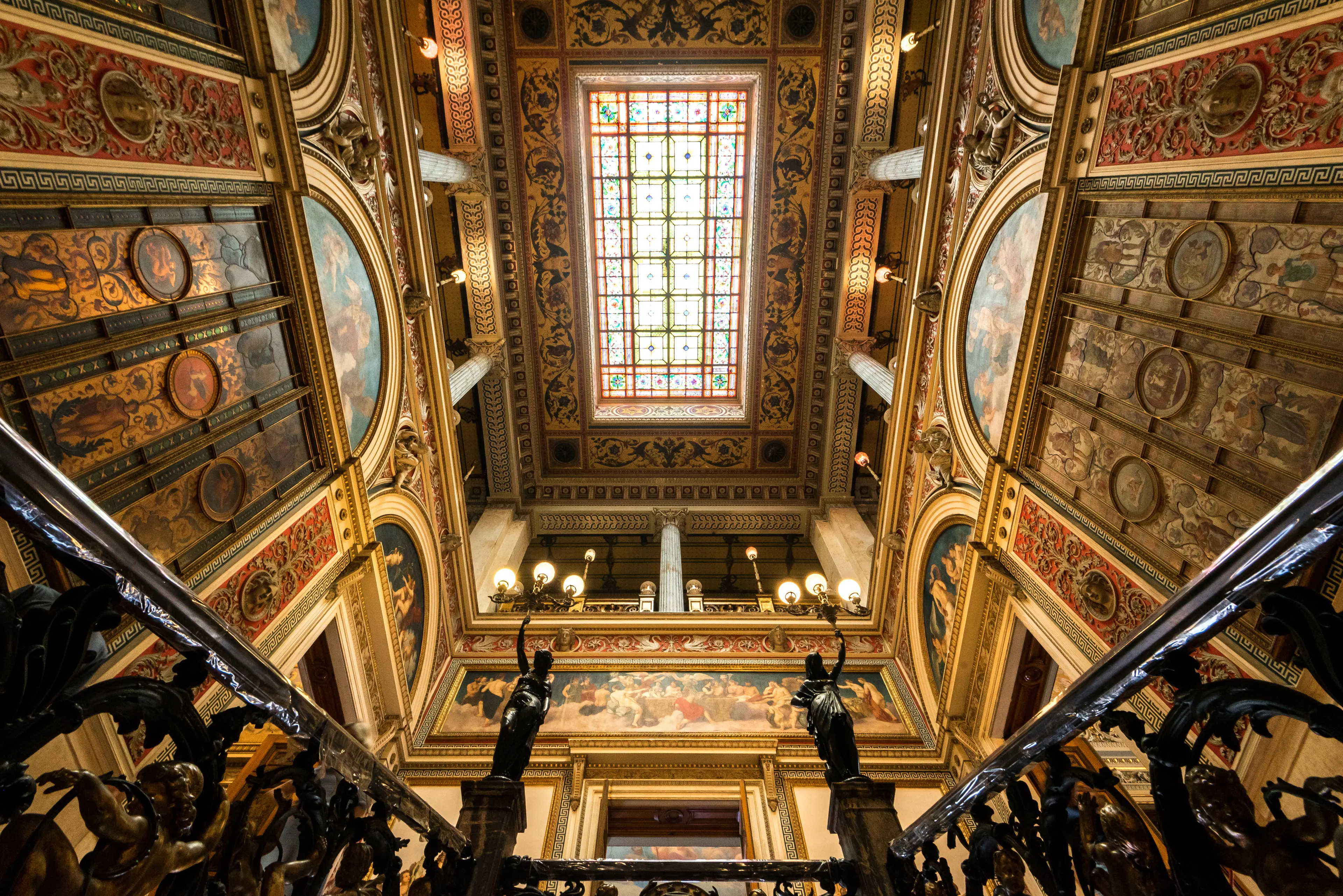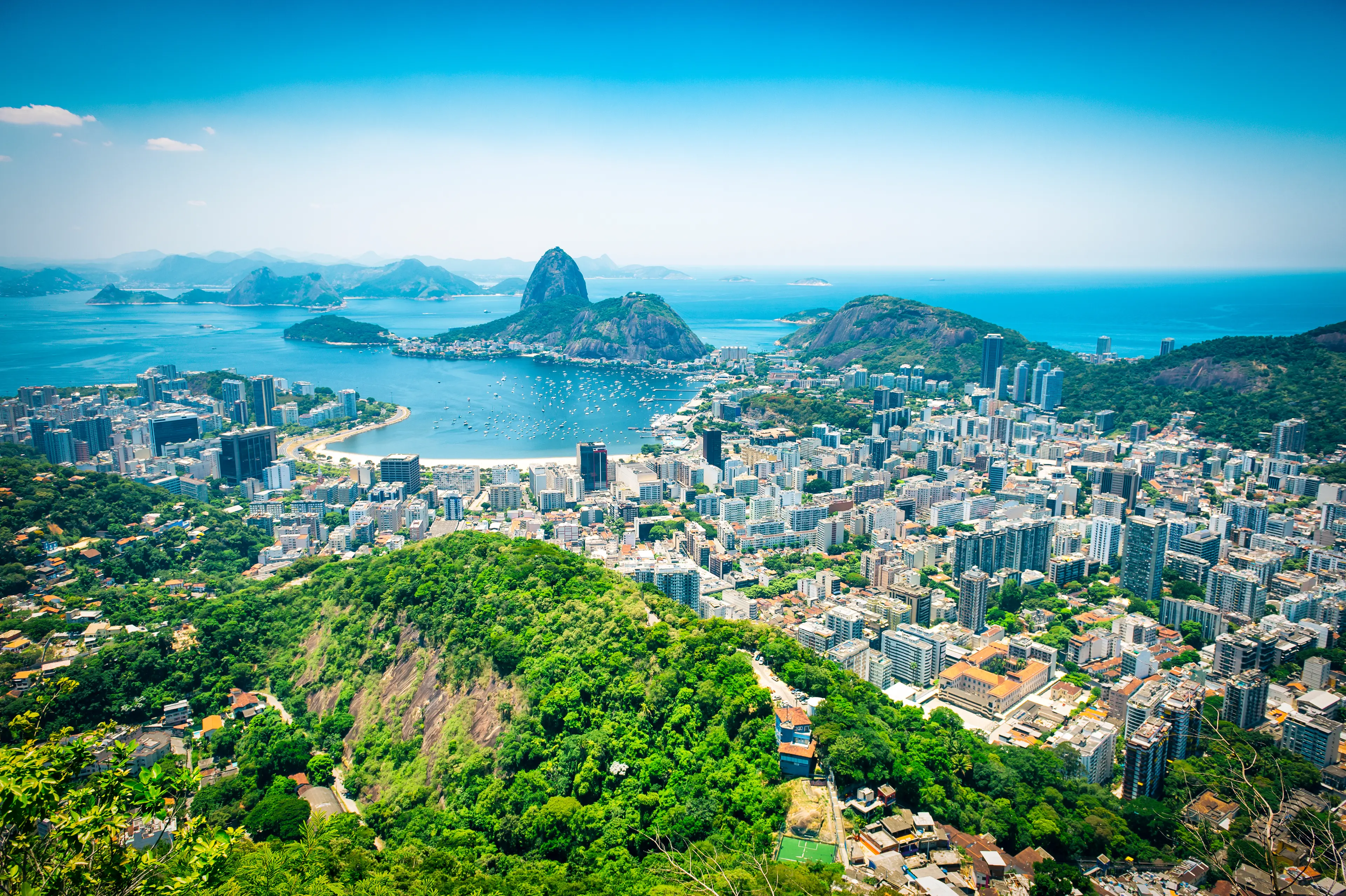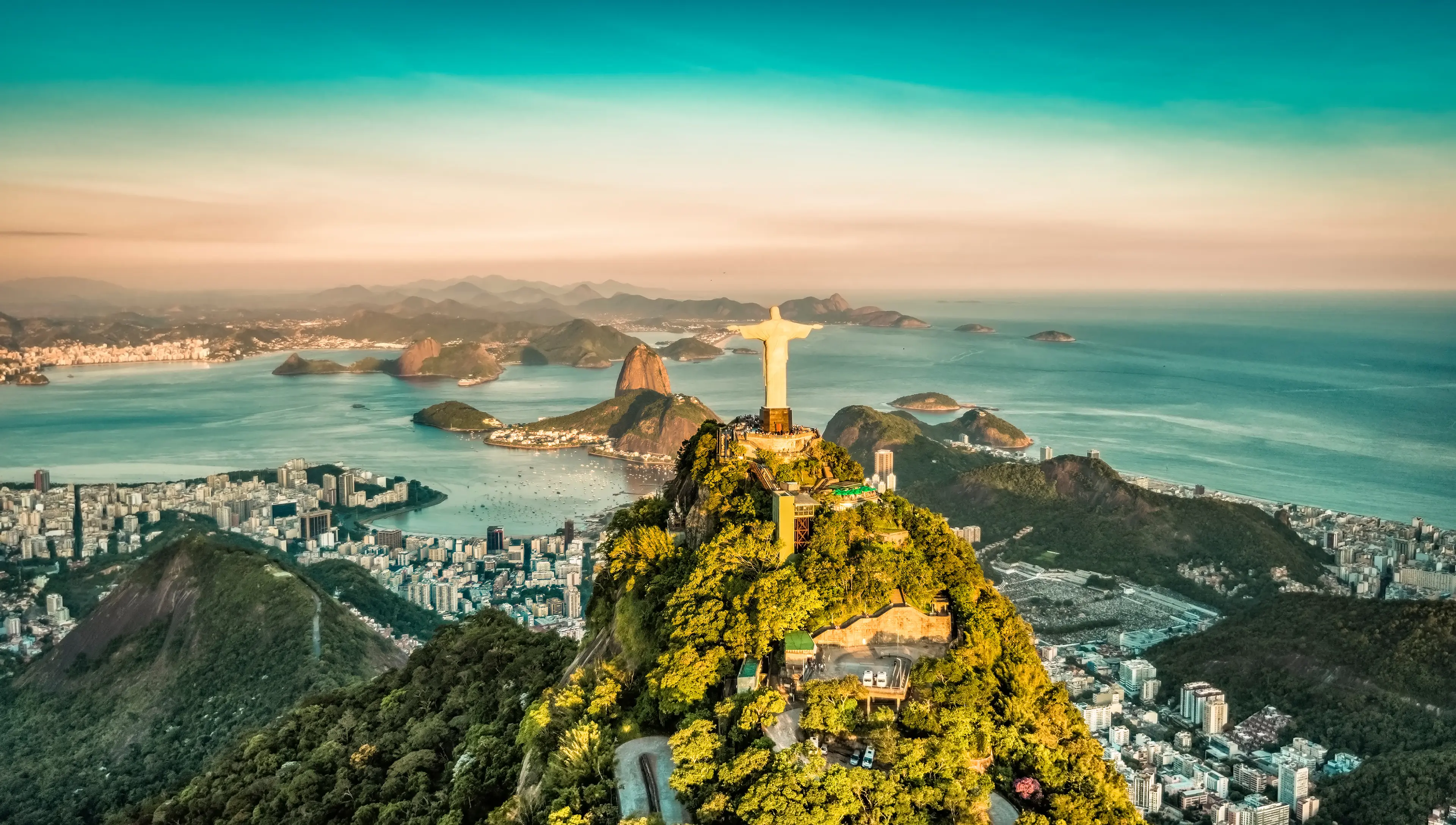2-Day Relaxing Food, Wine, and Shopping Adventure in Rio with Friends
Rio de Janeiro, Brazil
2 days





About Rio de Janeiro, Brazil
Experience the vibrant culture and breathtaking landscapes of Rio de Janeiro, Brazil. This city is a tropical paradise, boasting iconic landmarks like the Christ the Redeemer statue and Sugarloaf Mountain. Explore the lively Copacabana and Ipanema beaches, or immerse yourself in the city's rich history at the Museum of Tomorrow. Rio's nightlife is a spectacle in itself, with samba clubs and bars offering a taste of local music and cuisine. The city is also home to the world-famous Carnival, a festival of dance, color, and culture. Whether you're an adventurer, a history buff, or a beach lover, Rio de Janeiro has something to offer everyone. Come and experience the warmth and vibrancy of Brazil's most captivating city.
2-Day Itinerary
Day 2
Discovering the Landmarks and Historic Center of Rio
Morning
Start your second day with a visit to the iconic Christ the Redeemer statue. This world-famous landmark offers breathtaking views of the city and the surrounding area.
Lunch
Have lunch at a local restaurant in the Santa Teresa neighborhood. This bohemian area is known for its artistic vibe and offers a variety of dining options, from traditional Brazilian cuisine to international dishes.
Afternoon
Spend your afternoon exploring the historic center of Rio. Visit the Municipal Theatre, the National Library, and the National Museum of Fine Arts. Don't forget to stop by the Confeitaria Colombo, a historic café known for its stunning Belle Époque architecture.
Dinner
For dinner, head to a local Boteco in the Flamengo neighborhood. These casual bars offer a wide range of tapas-style dishes, perfect for sharing with friends.
Evening
End your trip with a visit to the Sugarloaf Mountain. Take the cable car up to the summit and enjoy the stunning nighttime views of the city.
Attractions in Itinerary (12)

1Copacabana Beach
World-renowned beach that stretches for 4km, famous for its New Year's Eve celebrations.

2Ipanema
Ipanema is a neighborhood located in the South Zone of the city of Rio de Janeiro, Brazil, between Leblon and Arpoador. The beach at Ipanema became known internationally with the popularity of the bossa nova jazz song, 'The Girl from Ipanema' ('Garota de Ipanema'), written by Antônio Carlos Jobim and Vinícius de Moraes.

3Leblon
Leblon is an upscale neighborhood in Rio de Janeiro, known for its beautiful beach and vibrant nightlife.

4Lapa
Lapa is a neighborhood in Rio de Janeiro, famous for its bohemian culture, historic architecture, and lively nightlife.

5Christ the Redeemer
One of the Seven Wonders of the World, this statue of Jesus Christ stands atop the Corcovado Mountain.

6Santa Teresa
A bohemian neighborhood known for its winding, narrow streets, colonial-style houses, and a vibrant arts scene.

7Municipal Theatre
One of the most important theatres in Brazil, known for its architectural beauty and artistic value.

8National Library
The National Library of Brazil is one of the largest libraries in the world, and a significant cultural and architectural landmark in Rio de Janeiro.

9National Museum of Fine Arts
The National Museum of Fine Arts in Rio de Janeiro houses an impressive collection of Brazilian art. It is one of the most important cultural institutions in the country and a must-visit for art enthusiasts.

10Confeitaria Colombo
Confeitaria Colombo is a historic café in the heart of Rio de Janeiro. Known for its stunning Belle Époque architecture, it offers a variety of traditional Brazilian pastries, cakes, and other delicacies.

11Boteco
A boteco is a traditional Brazilian bar or restaurant where locals gather to enjoy drinks, snacks, and often live music. It's a great place to experience the local culture and cuisine.

12Sugarloaf Mountain
A peak situated in Rio de Janeiro, offering panoramic views of the city and beyond.
Local Food and Drinks (12)

Feijoada
A hearty black bean stew with pork, served with rice, collard greens, and farofa. It's considered Brazil's national dish and is a must-try when in Rio de Janeiro.

Caipirinha
Brazil's national cocktail made with cachaça (sugar cane hard liquor), sugar, and lime. It's refreshing and popular throughout Rio de Janeiro.

Pão de Queijo
Delicious cheese bread balls made from cassava flour. They are a popular snack in Rio de Janeiro and throughout Brazil.

Brigadeiro
A sweet, chocolate truffle-like dessert made from condensed milk, cocoa powder, butter, and chocolate sprinkles. Brigadeiros are a staple at Brazilian parties and a popular treat in Rio de Janeiro.

Acarajé
A deep-fried ball of black-eyed pea dough, filled with vatapá, caruru, tomato salad, and shrimp. It's a popular street food in Rio de Janeiro, especially during festivals.

Coxinha
A popular Brazilian snack shaped like a chicken drumstick, filled with shredded chicken and covered in dough, then deep-fried. It's a common sight in snack bars and bakeries in Rio de Janeiro.

Pastel
A thin, crispy pastry filled with various ingredients like cheese, meat, or palm hearts. Pastels are a popular street food in Rio de Janeiro's markets.

Moqueca
A traditional Brazilian seafood stew made with fish, onions, garlic, tomatoes, and coriander, cooked in coconut milk. It's a popular dish in Rio de Janeiro, especially in coastal areas.

Açaí
A bowl of frozen and mashed açaí palm fruit served as a smoothie and often topped with granola, banana, and other fruits. It's a popular and refreshing treat in Rio de Janeiro.

Churrasco
Brazilian barbecue, usually consisting of large chunks of meat skewered and cooked over open flames. It's a popular meal in Rio de Janeiro and a must-try for meat lovers.

Empada
A small, round pie filled with various ingredients like chicken, shrimp, or palm hearts. Empadas are a popular snack in Rio de Janeiro's bakeries and beach kiosks.

Quindim
A sweet dessert made from sugar, egg yolks, and ground coconut. It's a traditional Brazilian dessert and a popular treat in Rio de Janeiro.
Best time to visit
The best time to visit Rio de Janeiro, Brazil is between December and March when the weather is warm and sunny enough to hit the beaches. The city's festive atmosphere is at its peak with the celebration of Rio Carnival, usually held in February. However, this is also the peak tourist season, so expect large crowds and higher prices. If you prefer a less crowded period, April to June and September to November are also great times to visit, with pleasant weather and fewer tourists.
How to get around
Public Buses
Public buses are a common way to get around in Rio de Janeiro. They cover a wide range of routes and can take you to most parts of the city. However, they can be crowded during peak hours and the routes can be confusing for first-time visitors.
Subway
The subway system in Rio de Janeiro, known as the MetrôRio, is a fast and efficient way to travel around the city. It has two lines that cover key areas including downtown, the South Zone, and the North Zone. It's particularly useful for avoiding traffic during peak hours.
Taxis
Taxis are plentiful in Rio de Janeiro and can be hailed from the street, ordered by phone, or picked up from taxi stands. They are metered and relatively affordable. It's a convenient way to get around, especially if you're not familiar with the city's public transport system.
Ridesharing
Ridesharing services like Uber and 99 are widely used in Rio de Janeiro. They offer a convenient and often cheaper alternative to taxis. You can order a ride from your smartphone and track your journey in real time.
Bicycle
Rio de Janeiro has an extensive network of bike lanes, making cycling a viable way to get around. The city also has a bike-sharing program called Bike Rio, which allows you to rent a bike from one of the many stations around the city.
Tram
The Santa Teresa Tram, also known as the 'bonde', is a historic streetcar that offers a unique way to explore the Santa Teresa neighborhood. It's not only a mode of transport but also a popular tourist attraction.
Ferries
Ferries operate across Guanabara Bay, connecting Rio de Janeiro with Niterói and other locations. They offer a scenic way to travel and can be a pleasant alternative to road transport.
Private Car Rental
Renting a car can give you the freedom to explore Rio de Janeiro at your own pace. However, it's worth noting that traffic can be heavy and parking can be difficult in some areas. It's recommended for those who are comfortable with driving in busy city conditions.
Motorcycle Taxi
Motorcycle taxis are a quick and efficient way to get around Rio de Janeiro, especially in areas with heavy traffic. They are commonly used by locals and can be found in most parts of the city.
Vans
Vans are another form of public transport in Rio de Janeiro. They operate on fixed routes and are often faster than buses. However, they can be crowded and are usually used for short distances.
Important information
CurrencyR$ BRL
Time zoneFederal District
Driving sideRight
Emergency phoneAmbulance: 192 or 193 ; Fire: 193; Police: 190
Drinking waterOpt for bottled water
Power sockets
Voltage220 V
Things to know about Rio de Janeiro, Brazil as a first time visitor
1
The official language is Portuguese, not Spanish. English is not widely spoken outside of tourist areas.
2
The currency is the Brazilian Real (BRL). Credit cards are widely accepted, but it's always good to have some cash on hand.
3
Tipping is not mandatory in Brazil, but it's customary to leave a 10% tip for good service in restaurants.
4
Public transportation is extensive and includes buses, metro, and taxis. However, be aware that traffic can be heavy, especially during rush hour.
5
Rio de Janeiro is in the Brasilia Time Zone (BRT), which is 3 hours behind Coordinated Universal Time (UTC-3).
6
The electrical outlets in Brazil are type N, with a standard voltage of 127/220V and a standard frequency of 60Hz.
7
Tap water is not safe to drink. Always opt for bottled water.
8
Rio de Janeiro can be hot and humid, with average temperatures ranging from 70°F to 90°F (21°C to 32°C).
9
Brazilian food is diverse and flavorful. Try local dishes like feijoada (black bean stew with pork) and acarajé (deep-fried ball of black-eyed pea dough filled with shrimp).
10
Be cautious of your belongings at all times, especially in crowded areas. Petty theft can be a problem.
11
Avoid isolated areas, especially at night. Stick to well-lit, populated places.
12
The sun can be intense, so bring sunscreen, a hat, and sunglasses.
13
It's customary to dress casually. However, Brazilians take pride in their appearance, so avoid wearing overly casual or sloppy clothing.
14
Healthcare facilities are generally good in Rio, but it's recommended to have travel insurance that covers medical expenses.
15
The legal drinking age in Brazil is 18.
16
If you're a smoker, be aware that smoking is banned in many public places, including restaurants and bars.
17
Public restrooms may charge a small fee for use, so keep some change handy.
18
If you're visiting during Carnival, book your accommodations well in advance as this is a very busy time.
19
Brazilians are known for their friendliness and hospitality. Don't be surprised if you're greeted with a kiss on the cheek.
20
Always respect local customs and traditions. For example, it's considered rude to arrive on time for a social gathering. Brazilians usually arrive 15-30 minutes late.
Basic Portuguese to know as a first time visitor
English phrase | Native phrase | Pronunciation | When to use it |
|---|---|---|---|
Hello | Olá | O-la | Greeting someone |
Goodbye | Tchau | Chow | Saying farewell |
Please | Por favor | Pohr fah-vohr | Making a request |
Thank you | Obrigado | Oh-bree-gah-doo | Expressing gratitude |
Yes | Sim | Seem | Affirming something |
No | Não | Nown | Negating something |
Excuse me | Com licença | Kohm lee-sen-sah | Getting someone's attention |
I'm sorry | Desculpe | Dess-kool-peh | Apologizing |
Do you speak English? | Você fala inglês? | Voh-seh fah-lah een-glesh? | Asking if someone speaks English |
I don't understand | Eu não entendo | Eh-oo nown en-ten-doo | Expressing confusion |
Where is...? | Onde está...? | Ond-eh es-tah? | Asking for directions |
Bathroom | Banheiro | Bahn-yay-roh | Looking for a restroom |
Help | Ajuda | Ah-zhoo-dah | In case of emergency |
Food | Comida | Koh-mee-dah | Looking for something to eat |
Water | Água | Ah-gwah | Asking for water |
Beer | Cerveja | Ser-veh-zhah | Ordering a beer |
Check, please | A conta, por favor | Ah kon-tah, pohr fah-vohr | Asking for the bill |
How much does it cost? | Quanto custa? | Kwan-toh coos-tah? | Asking for the price |
I would like... | Eu gostaria... | Eh-oo gohs-tah-ree-ah | Making a request |
Good night | Boa noite | Boa no-ee-che | Saying goodnight |
Packing List
Clothing
Lightweight clothing
Swimwear
Flip flops
Sunglasses
Sun hat
Comfortable walking shoes
Light jacket or sweater for cooler evenings
Underwear
Socks
Toiletries
Travel-size shampoo and conditioner
Travel-size body wash
Toothbrush and toothpaste
Deodorant
Razor and shaving cream
Sunscreen
Insect repellent
First aid kit
Prescription medications
Hand sanitizer
Travel documents and essentials
Passport
Driver's license or ID card
Credit and debit cards
Cash in local currency
Travel insurance documents
Hotel and transportation reservation confirmations
Emergency contact information
Electronics and gadgets
Smartphone
Charger for smartphone
Power bank
Headphones
Camera
Memory card for camera
Travel adapter
Miscellaneous items
Travel guidebook
Snacks
Reusable water bottle
Beach towel
Daypack for excursions
Travel pillow
Earplugs and eye mask
Umbrella or rain poncho
Weather Conditions
When planning your trip to Rio de Janeiro, it's important to consider the city's tropical climate. Rio experiences a hot and humid summer from December to March, with temperatures often reaching 86°F (30°C) or higher. This is also the city's rainy season, so be prepared for occasional showers and thunderstorms. From June to September, during the winter season, the weather is generally cooler and drier, with temperatures ranging between 68°F (20°C) and 77°F (25°C). Evenings can be slightly cooler, so it's a good idea to pack a light jacket or sweater. Regardless of when you visit, it's advisable to pack lightweight, breathable clothing due to the city's overall warm climate. Don't forget your swimsuit for Rio's famous beaches, and remember to bring a good sunscreen, as the sun can be quite strong year-round. If you're planning to visit during the Carnival, which usually takes place in February, be prepared for hot and humid conditions. Despite the possibility of rain, the festivities continue unabated, so a waterproof poncho could be a useful addition to your packing list. Lastly, keep an eye on the weather forecast leading up to your trip, as conditions can change quickly in Rio. This will help you pack appropriately and plan your activities accordingly. Enjoy your trip to this vibrant and beautiful city!
| Month | Hi / Lo (°C) | Weather Overview |
|---|---|---|
January | 35° / 23° | January is one of the hottest months in Rio, with temperatures often reaching 35°C. It's also the peak of the rainy season, so pack an umbrella. |
February | 35° / 23° | February is still very hot and humid, with similar temperatures to January. It's also the month of the famous Rio Carnival, so expect large crowds. |
March | 33° / 22° | March sees a slight drop in temperature, but it's still quite warm. Rainfall begins to decrease, but occasional showers can still occur. |
April | 30° / 21° | April is the start of the fall season in Rio, with temperatures cooling down. It's a great time to visit as it's less crowded and the weather is still pleasant. |
May | 28° / 19° | May is a comfortable month to visit, with mild temperatures and less rainfall. It's a good time for outdoor activities and sightseeing. |
June | 27° / 18° | June is the start of winter in Rio, but temperatures remain mild. It's the driest month of the year, making it ideal for outdoor exploration. |
July | 27° / 18° | July is similar to June, with mild temperatures and low rainfall. It's a great time to visit the beaches as they are less crowded. |
August | 28° / 18° | August sees a slight increase in temperature, but it's still quite comfortable. It's a good time to visit the city's landmarks and enjoy outdoor activities. |
September | 29° / 19° | September marks the start of spring in Rio, with temperatures starting to rise. It's a great time to enjoy the city's parks and beaches. |
October | 30° / 20° | October is a warm month, with temperatures often reaching 30°C. It's a good time to visit the beaches and enjoy water sports. |
November | 32° / 21° | November is quite hot, with temperatures often reaching 32°C. Rainfall begins to increase, so pack a raincoat or umbrella. |
December | 34° / 22° | December is one of the hottest months, with temperatures often reaching 34°C. It's also the start of the summer holiday season, so expect larger crowds. |
Did you know?
Places near by Rio de Janeiro, Brazil

Petrópolis
Known as the Imperial City, Petrópolis is a charming mountain town with a rich history. It was once the summer residence of the Brazilian royal family.

Búzios
A beautiful seaside resort town with stunning beaches and a vibrant nightlife. It's famous for its unique combination of rustic charm, architectural harmony, and sophisticated boutiques and restaurants.

Paraty
A historic town known for its colonial architecture, cobblestone streets, and surrounding nature. It's a UNESCO World Heritage site.

Angra dos Reis
Famous for its coastline, with 365 islands and over 2,000 beaches. It's a popular getaway for Rio's residents, especially for boating and diving.

Ilha Grande
A tropical paradise with pristine beaches, lush forests, and abundant wildlife. It's a car-free island, preserving its natural beauty.

São Paulo
The largest city in Brazil, known for its skyscrapers, gastronomy, and robust culture scene. It's a bustling metropolis with something for everyone.

Ouro Preto
A former colonial mining town located in the mountains of Minas Gerais. It's known for its baroque architecture.

Salvador
Known for its Portuguese colonial architecture, Afro-Brazilian culture, and tropical coastline. It's the capital of Bahia state.




